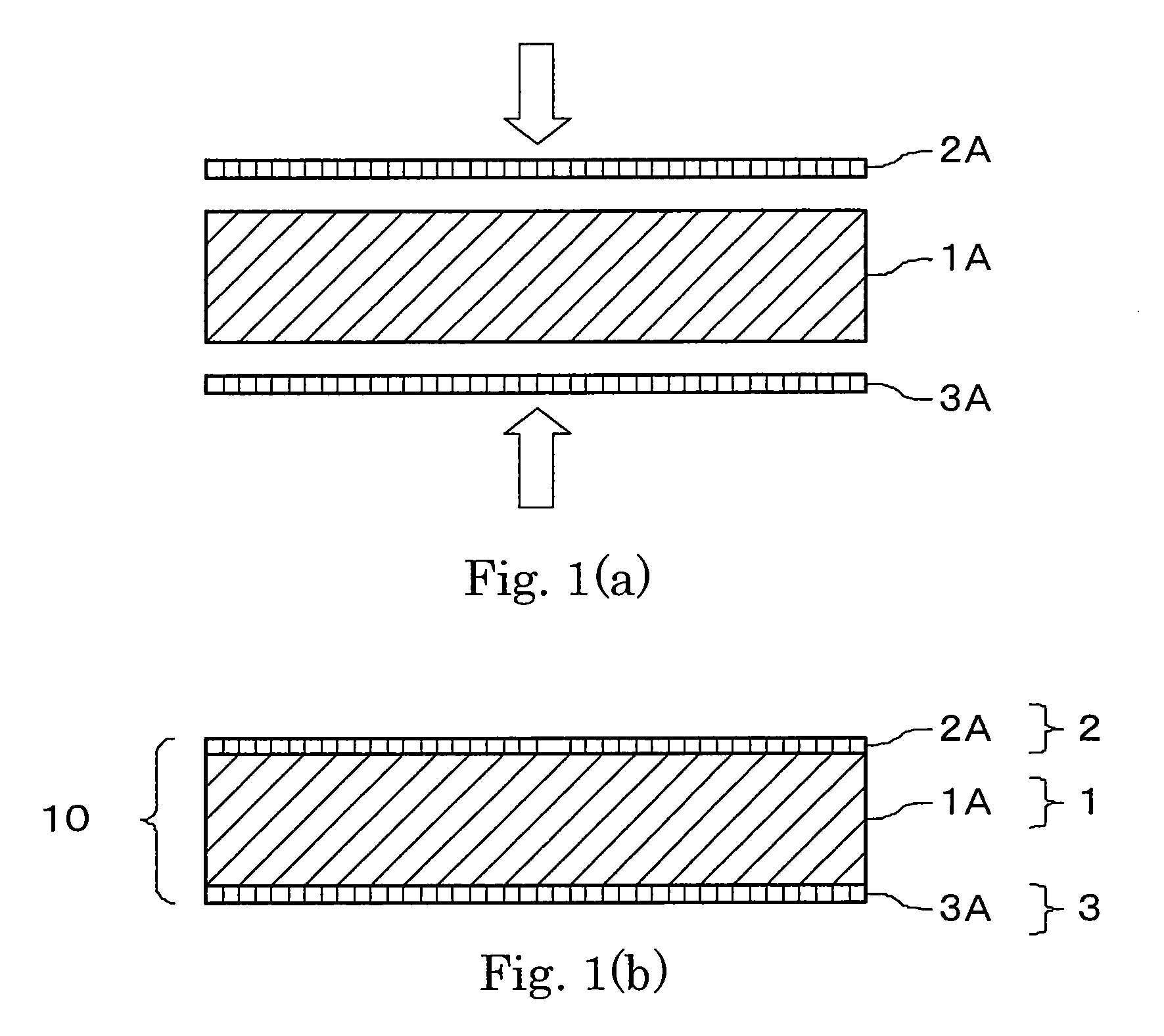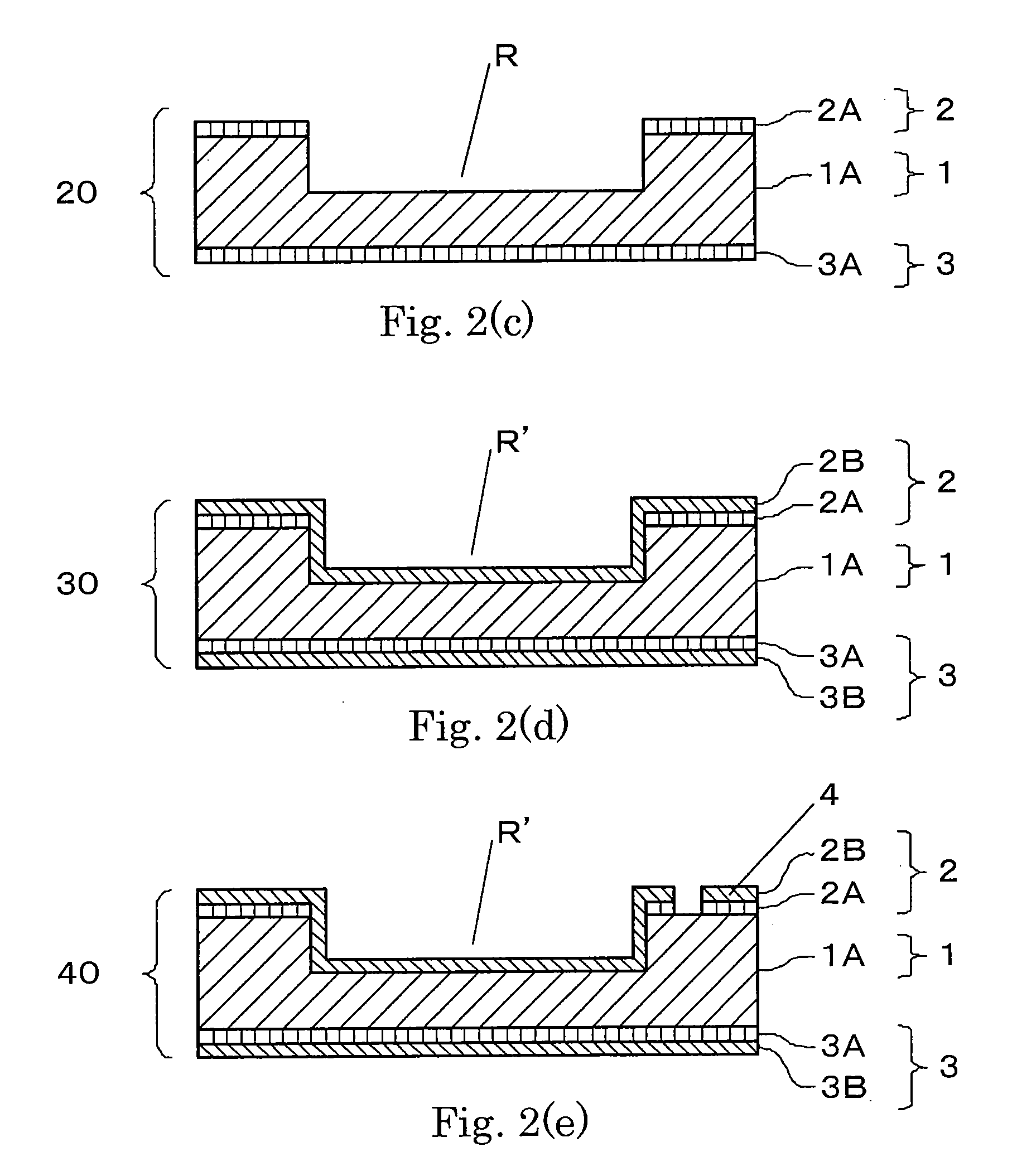Substrate applicable in chip LED package
a technology of substrate and chip led, applied in the direction of resistive material coating, solid-state device coating process, resistive material coating, etc., can solve the problems of led itself being exfoliated from the substrate, adverse effects on the led mounting part, etc., to achieve sufficient heat resistance, small linear expansion coefficient, excellent reliability
- Summary
- Abstract
- Description
- Claims
- Application Information
AI Technical Summary
Benefits of technology
Problems solved by technology
Method used
Image
Examples
example 1
(1) Production of Liquid Crystal Polyester
[0095]A reactor equipped with a stirring apparatus, a torque-meter, a nitrogen gas introduction pipe, a thermometer, and a reflux condenser was loaded with 1976 g (10.5 mol) of 2-hydroxy-6-naphthoic acid, 1474 g (9.75 mol) of 4-hydroxyacetanilide, 1620 g (9.75 mol) of isophthalic to acid, and 2374 g (23.25 mol) of acetic anhydride. After replacing the inside of the reactor sufficiently with nitrogen gas, the temperature was raised to 150° C. over 15 minutes under nitrogen gas stream, and the reflux was carried out for 3 hours while maintaining the temperature.
[0096]Thereafter, while removing the effluent byproduct acetic acid and unreacted acetic anhydride, the temperature was raised to 300° C. over 170 minutes. The time point at which the rise of the torque was recognized was regarded as the end of reaction, and the contents were taken out to obtain a prepolymer having a comparatively low molecular weight. The prepolymer taken out was coole...
example 2
[0100]A prepreg 1 was obtained to obtain a substrate 1 in the same manner as in Example 1 except that a glass cloth having a thickness of 45 μm (IPC naming: 1078) (manufactured by Arisawa Manufacturing Co., Ltd.) was used in Example 1(3). In the obtained prepreg 1, the attached amount of the liquid crystal polyester to the glass cloth was about 55 wt %, with an average thickness of 55 μm and with a thickness variation of 3%. The heat resistance and the linear expansion coefficient were evaluated with respect to the obtained substrate 1. The results are shown in Table 1.
example 3
[0103]A prepreg 1 was obtained to obtain a substrate 1 in the same manner as in Example 1 except that a silica filler (“CA-0020” manufactured by Korea Semiconductor Material Co., Ltd.) was added to the solution composition obtained in Example 1(2) by 20.0 vol % relative to the liquid crystal polyester, and that a glass cloth having a thickness of 45 μm (IPC naming: 1078) (manufactured by Arisawa Manufacturing Co., Ltd.) was used in Example 1(3). In the obtained prepreg 1, the total of the attached amounts of the liquid crystal polyester and the silica filler to the glass cloth was about 60 wt %, with an average thickness of 60 μm and with a thickness variation of 3%. The linear expansion coefficient was evaluated with respect to the obtained substrate 1. The result is shown in Table 1.
PUM
| Property | Measurement | Unit |
|---|---|---|
| temperature | aaaaa | aaaaa |
| temperature | aaaaa | aaaaa |
| conductive | aaaaa | aaaaa |
Abstract
Description
Claims
Application Information
 Login to View More
Login to View More - R&D
- Intellectual Property
- Life Sciences
- Materials
- Tech Scout
- Unparalleled Data Quality
- Higher Quality Content
- 60% Fewer Hallucinations
Browse by: Latest US Patents, China's latest patents, Technical Efficacy Thesaurus, Application Domain, Technology Topic, Popular Technical Reports.
© 2025 PatSnap. All rights reserved.Legal|Privacy policy|Modern Slavery Act Transparency Statement|Sitemap|About US| Contact US: help@patsnap.com



